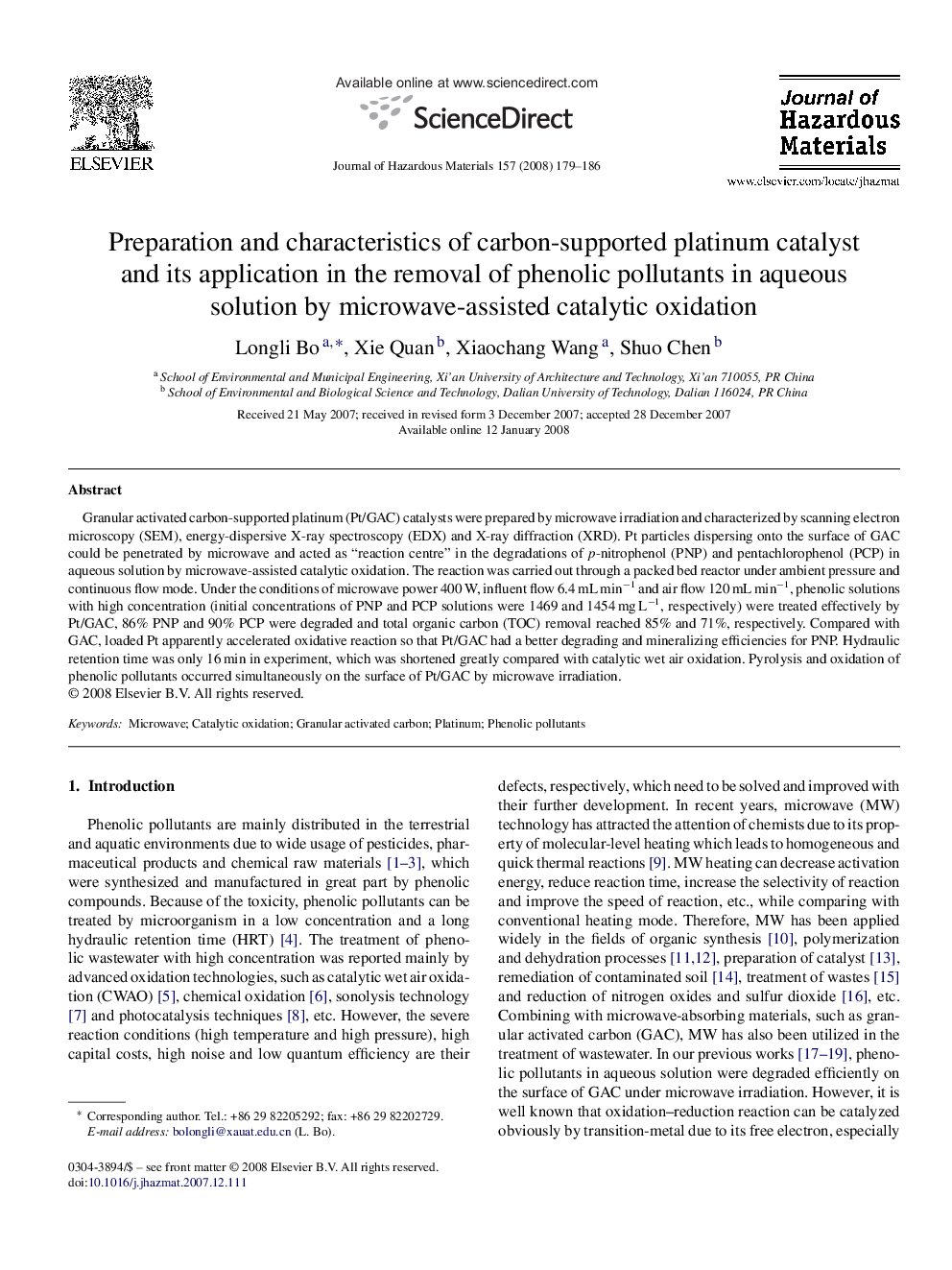| Article ID | Journal | Published Year | Pages | File Type |
|---|---|---|---|---|
| 582947 | Journal of Hazardous Materials | 2008 | 8 Pages |
Abstract
Granular activated carbon-supported platinum (Pt/GAC) catalysts were prepared by microwave irradiation and characterized by scanning electron microscopy (SEM), energy-dispersive X-ray spectroscopy (EDX) and X-ray diffraction (XRD). Pt particles dispersing onto the surface of GAC could be penetrated by microwave and acted as “reaction centre” in the degradations of p-nitrophenol (PNP) and pentachlorophenol (PCP) in aqueous solution by microwave-assisted catalytic oxidation. The reaction was carried out through a packed bed reactor under ambient pressure and continuous flow mode. Under the conditions of microwave power 400 W, influent flow 6.4 mL minâ1 and air flow 120 mL minâ1, phenolic solutions with high concentration (initial concentrations of PNP and PCP solutions were 1469 and 1454 mg Lâ1, respectively) were treated effectively by Pt/GAC, 86% PNP and 90% PCP were degraded and total organic carbon (TOC) removal reached 85% and 71%, respectively. Compared with GAC, loaded Pt apparently accelerated oxidative reaction so that Pt/GAC had a better degrading and mineralizing efficiencies for PNP. Hydraulic retention time was only 16 min in experiment, which was shortened greatly compared with catalytic wet air oxidation. Pyrolysis and oxidation of phenolic pollutants occurred simultaneously on the surface of Pt/GAC by microwave irradiation.
Related Topics
Physical Sciences and Engineering
Chemical Engineering
Chemical Health and Safety
Authors
Longli Bo, Xie Quan, Xiaochang Wang, Shuo Chen,
